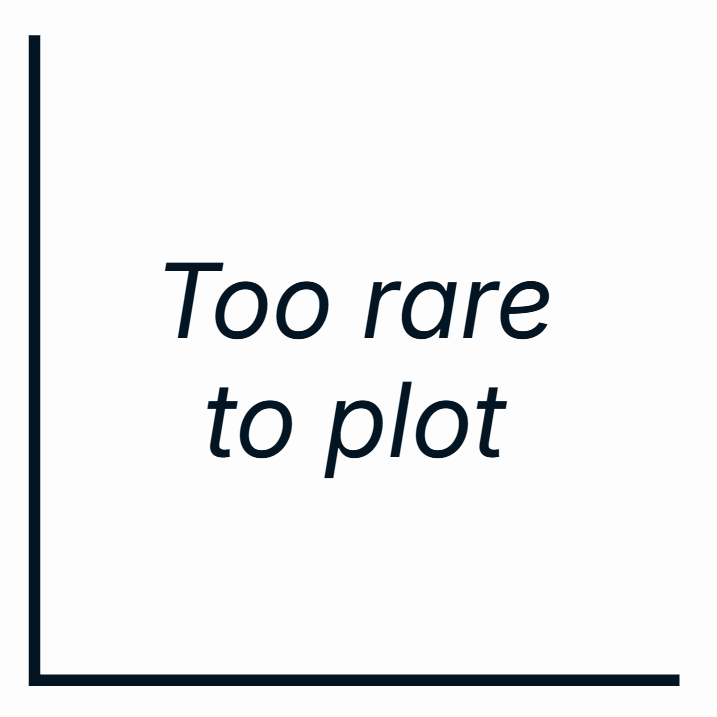Aquatic Warbler
Introduction
Similar to a Sedge Warbler in general appearance, but with a buff crown stripe and more patterned back, Aquatic Warbler is a rare passage visitor to Britain.
Aquatic Warbler has a restricted breeding range, with 80% of the global population thought to breed in Poland. Autumn movements to the wintering grounds in western Africa result in records of birds along the English Channel coasts. Numbers here fallen in recent years, most likely a result of declines in the breeding populations linked to habitat loss.
Key Stats
Status and Trends
Conservation Status
Population Size
Population Change
Population trends of this scarce species are not routinely monitored.
Distribution
This vagrant is too rarely reported to map distribution.
European Distribution Map
Distribution Change
This vagrant is too rarely reported to map distribution change.
Seasonality
This species has been too rarely reported to BirdTrack during 2011–22 to properly assess seasonality.
Movement
Britain & Ireland movement
Foreign locations of birds ringed or recovered in Britain & Ireland
Dots show the foreign destinations of birds ringed in Britain & Ireland, and the origins of birds ringed overseas that were subsequently recaptured, resighted or found dead in Britain & Ireland. Dot colours indicate the time of year that the species was present at the location.
- Winter (Nov-Feb)
- Spring (Mar-Apr)
- Summer (May-Jul)
- Autumn (Aug-Oct)

European movements
EuroBirdPortal uses birdwatcher's records, such as those logged in BirdTrack to map the flows of birds as they arrive and depart Europe. See maps for this species here.
The Eurasian-African Migration Atlas shows movements of individual birds ringed or recovered in Europe. See maps for this species here.
Biology
Productivity and Nesting
Nesting timing
Egg measurements
Clutch Size
Survival and Longevity
Survival is shown as the proportion of birds surviving from one year to the next and is derived from bird ringing data. It can also be used to estimate how long birds typically live.
View number ringed each year in the Online Ringing Report.
Biometrics
Wing length and body weights are from live birds (source).
Wing length
Body weight
Ring Size
Classification, names and codes
Classification and Codes
- Order: Passeriformes
- Family: Acrocephalidae
- Scientific name: Acrocephalus paludicola
- Authority: Vieillot, 1817
- BTO 2-letter code: AQ
- BTO 5-letter code: AQUWA
- Euring code number: 12420
Alternate species names
- Catalan: boscarla d'aigua
- Czech: rákosník ostricový
- Danish: Vandsanger
- Dutch: Waterrietzanger
- Estonian: tarna-roolind
- Finnish: sarakerttunen
- French: Phragmite aquatique
- German: Seggenrohrsänger
- Hungarian: csíkosfeju nádiposzáta
- Icelandic: Fenjasöngvari
- Irish: Ceolaire Uisce
- Italian: Pagliarolo
- Latvian: grišlu kaukis
- Lithuanian: meldine nendrinuke
- Norwegian: Vannsanger
- Polish: wodniczka
- Portuguese: felosa-aquática
- Slovak: trsteniarik vodný
- Slovenian: povodna trstnica
- Spanish: Carricerín cejudo
- Swedish: vattensångare
- Welsh: Telor Dwr
More Evidence
More evidence from Conservation Evidence.com
Partners
Citing BirdFacts
If you wish to cite particular content in this page (e.g. a specific value) it is best to use the original sources as linked in the page. For a more general citation of the whole page please use: BTO (20XX) BirdFacts Species: profiles of birds occurring in the United Kingdom. BTO, Thetford (www.bto.org/birdfacts, accessed on xx/xx/xxxx).

